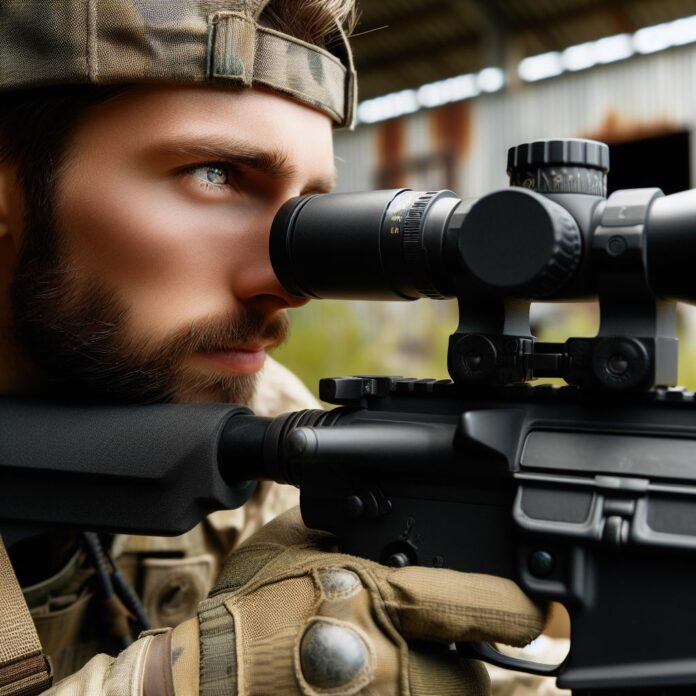Sighting in a scope is an essential process for ensuring accurate and precise shooting. However, there may be situations where you need to sight in a scope without actually shooting.
This could be due to safety concerns or environmental constraints. In this article, we will explore the reasons behind the need to sight in a scope without shooting and discuss the preparation required for this process.
We will also provide step-by-step instructions on how to use a boresighter, an effective tool for sighting in a scope without firing a single round. We will explore alternative optical alignment methods using visual techniques and laser devices.
Finally, we will discuss the importance of fine-tuning the scope and confirming accuracy at a shooting range. By following these guidelines, you can achieve accurate scope sighting even without shooting.
Why Sight in a Scope Without Shooting?
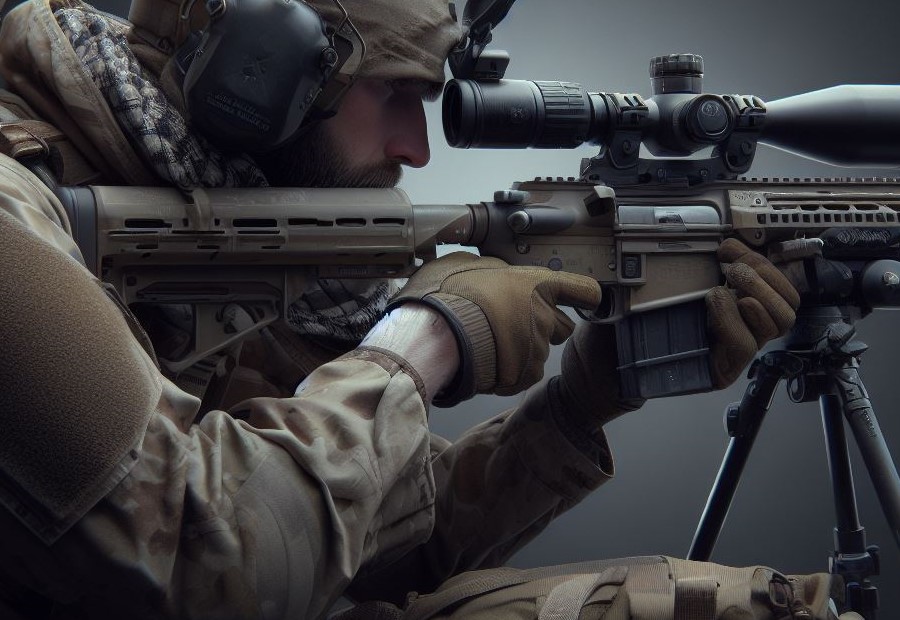
Why would anyone want to sight in a scope without shooting? Let’s explore the reasons behind this unconventional approach.
From safety concerns to environmental constraints, we’ll uncover the various factors that drive shooters to seek alternative methods for sighting in their scopes.
Discover how these considerations can significantly impact the shooting experience and the effectiveness of your scope. In this section, we delve into why sighting in a scope without shooting is a topic worth exploring.
1. Safety Concerns
When it comes to sighting in a scope without shooting, safety concerns are of utmost importance. Here are some key safety considerations to keep in mind:
- Eye protection: Always wear appropriate eye protection when handling a firearm, even during the process of sighting in a scope.
- Clear range: Ensure that the area where you will be sighting in the scope is clear of any obstructions or individuals to prevent accidents or injuries.
- Proper handling: Always treat the firearm as if it is loaded and keep the muzzle pointed in a safe direction. Be mindful of your surroundings and keep your finger off the trigger until ready to shoot.
- Maintain control: Maintain control of the firearm at all times and never leave it unattended. Store it securely when not in use.
- Know the laws: Familiarize yourself with local laws and regulations regarding firearm usage and ensure that you comply with them.
By following these safety guidelines, you can help prevent accidents and ensure a secure environment when sighting in a scope without shooting.
Remember, safety concerns are paramount when handling firearms, even if you are not actively shooting. Always prioritize safety to protect yourself and those around you.
2. Environmental Constraints
When sighting in a scope without shooting, it is important to take into consideration various environmental constraints. These environmental constraints can have an impact on the accuracy of the scope and the effectiveness of the sighting process.
Wind: Strong winds can significantly affect the trajectory of the bullet, making it challenging to properly sight in the scope without shooting. It can cause the bullet to drift off target.
Weather Conditions: Weather conditions such as rain, snow, or fog can impair visibility, making it difficult to accurately adjust the scope without shooting.
Outdoor Noise: Noise pollution from surrounding traffic or other sources can be distracting and make it more difficult to concentrate while sighting in the scope.
Lighting Conditions: Poor lighting conditions, such as low light or glare from the sun, can hinder visibility and present challenges in properly adjusting the scope.
Taking these environmental constraints into account is crucial to achieving accurate results when sighting in a scope without shooting.
It is advisable to select a calm day with minimal wind and optimal lighting conditions to minimize any interference.
Preparation for Sighting in a Scope without Shooting
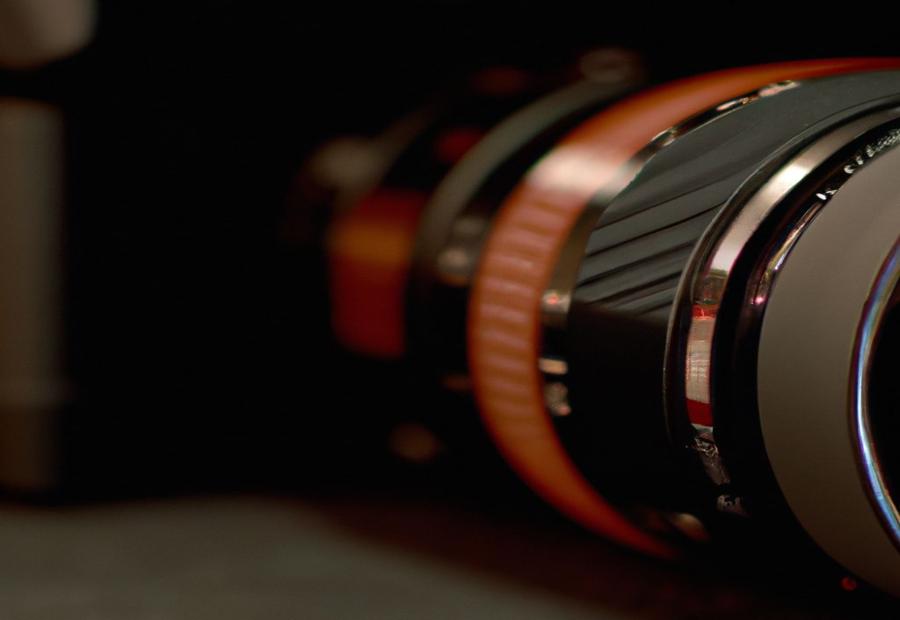
Photo Credits: Paintballbuzz.Com by John Campbell
Get ready to learn how to sight in a scope without shooting! In this section, we’ll cover all the necessary preparations you need to make before taking aim.
Discover the importance of selecting a safe location and ensuring your scope is properly mounted. We’ll also dive into checking the optics and reticle alignment, guaranteeing you’re ready to hit your target with precision.
It’s time to master the art of sighting in your scope without a single shot fired!
1. Choosing a Safe Location
When choosing a safe location for sighting in a scope without shooting, it is important to consider several factors to ensure the safety of yourself and others.
- Find an open and clear space with a suitable backdrop, such as a large field or an outdoor shooting range, to ensure that you are choosing a safe location.
- Make sure there are no people, pets, or any other distractions in the vicinity that could be harmed by the scope or potential ricochets. This aspect is crucial in choosing a safe location.
- Ensure that the location provides a safe shooting direction, away from any buildings, roads, or other occupied areas. This consideration plays a vital role in choosing a safe location.
- Check for any local laws or regulations regarding the use of scopes or firearms in the chosen location to avoid any legal issues, as it is essential in choosing a safe location.
- Consider the natural lighting conditions and try to choose a location with good visibility to accurately assess the scope’s alignment and adjustments. This factor is significant in choosing a safe location.
In addition to these considerations, it is essential to always prioritize safety and follow all relevant safety guidelines and precautions when handling firearms or scopes, even when not shooting. Remember, safety should never be compromised.
2. Properly Mounting the Scope
When it comes to properly mounting the scope, following these steps is crucial for sighting in a scope without shooting:
- Choose a safe location where you can securely mount your scope.
- Ensure the mounting surface is clean and free of debris.
- Attach the scope rings to the scope base using the provided screws.
- Place the scope onto the rings, aligning the scope’s mounting rail with the base.
- Tighten the screws on the rings to securely mount the scope. It’s important to use a torque wrench to ensure proper tightening.
- Double-check the alignment of the scope to make sure it is level and centered.
- Adjust the eye relief by moving the scope forward or backward in the rings, ensuring a comfortable viewing position.
- Verify that the crosshairs are perfectly vertical and horizontal using a bubble level.
Pro-tip: When mounting the scope, remember to tighten the screws evenly and gradually while alternating between each screw. This technique helps distribute the pressure evenly, preventing any damage or misalignment.
3. Checking the Optics and Reticle Alignment
When it comes to checking the optics and reticle alignment of a scope without shooting, it is crucial to follow a few steps to ensure accuracy.
- Inspect the optics: It is important to carefully examine the lenses for any dirt, smudges, or scratches that may affect clarity. Make sure to clean them using a lens cleaning solution and a microfiber cloth to remove any debris.
- Align the reticle: Take a look through the scope and align the reticle with a fixed point at a distance. Adjust the windage and elevation knobs as needed to center the reticle and ensure the crosshairs are level.
- Check for parallax: While looking through the scope, move your eye slightly and observe if the reticle stays on target. If it moves off, adjust the parallax knob until the reticle remains fixed on the target.
- Ensure correct eye relief: Eye relief refers to the distance between the rear lens of the scope and your eye. It is important to achieve proper eye relief to have a clear and full sight picture. Adjust the position of the scope until you achieve the desired eye relief.
- Verify reticle focus: Use the focus ring on the eyepiece to adjust until the reticle appears sharp and clear. This step ensures that both the reticle and the target are in focus.
By following these steps, you can effectively check and adjust the optics and reticle alignment of your scope without shooting. This will greatly improve accuracy when using the scope for target practice or hunting.
Using a Boresighter to Sight in a Scope
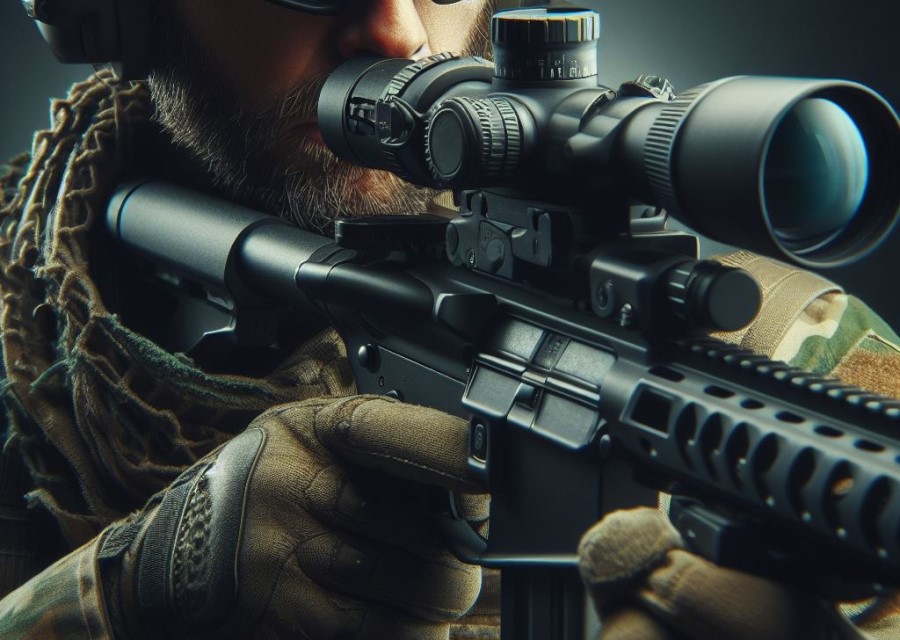
Discover the true power of boresighters for sighting in your scope without firing a single shot. Dive into the world of using boresighters to achieve precise scope alignment effortlessly.
From exploring different types of boresighters to learning the step-by-step process of utilizing them effectively, this section is your ultimate guide to mastering the art of scope sighting.
So get ready to unlock the secrets, improve your accuracy, and save time on the range with this game-changing tool.
1. Types of Boresighters
When it comes to sighting in a scope without shooting, there are various options available for boresighters that can be utilized.
These tools are specifically designed to assist in aligning the scope with the firearm without the requirement of live ammunition. Here are several categories of boresighters:
- Laser boresighters: These particular boresighters utilize a laser beam to project down the center of the barrel, aiding in aligning the scope. By being able to observe the laser beam on the target, it provides a visual reference for making adjustments.
- Magnetic boresighters: These specific boresighters rely on magnets to secure them to the end of the barrel. Equipped with a target grid, they enable the user to align the scope based on the pattern presented on the grid.
- Collimator boresighters: This specific type of boresighter is inserted into the chamber of the firearm, allowing the user to align the scope with the bore. Often, they are equipped with a grid pattern or target that assists in achieving proper alignment.
Each type of boresighter possesses its own set of advantages and may be more suitable for varying firearms or personal preferences. It is crucial to select the appropriate type based on your specific needs and the firearm you are utilizing.
2. Step-by-Step Guide to Using a Boresighter
Here is a step-by-step guide to effectively using a boresighter for sighting in a scope without shooting:
- Ensure the firearm is unloaded and in a safe condition.
- Place the boresighter into the firearm’s barrel, securing it properly.
- Look through the scope and adjust the windage and elevation to align the reticle with the boresighter’s laser.
- Make adjustments to the scope’s turrets as needed to achieve the desired alignment.
- Repeat the process a few times to ensure accuracy and consistency.
By following these steps, you can sight in your scope without the need for live ammunition, which makes it safe and convenient.
Optical Alignment Method
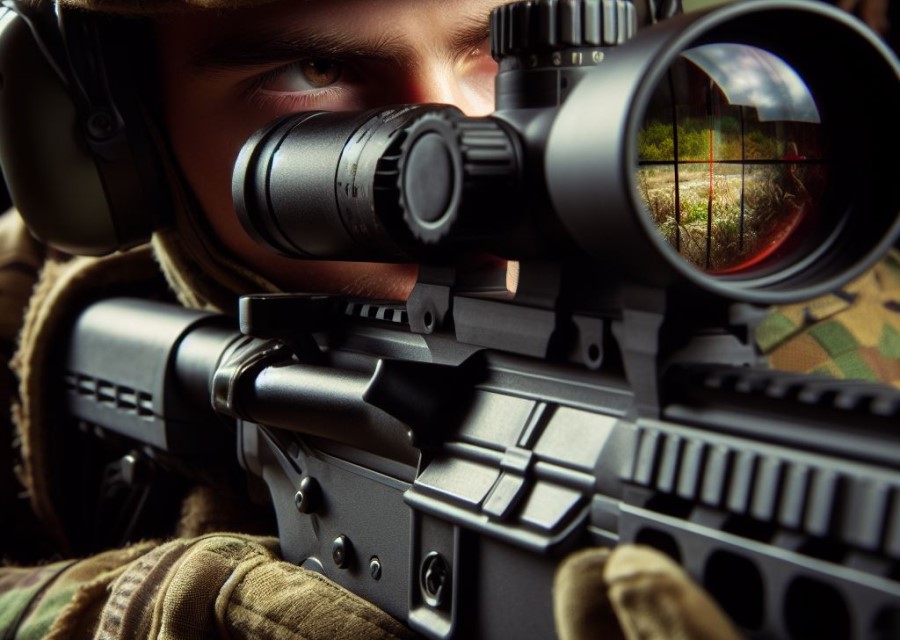
Discover the fascinating world of optical alignment methods for sighting in a scope without shooting. From visual alignment techniques to utilizing laser devices, we’ll journey through the various approaches to achieving precise scope alignment.
Get ready to unlock the secrets of accurate targeting and explore innovative tools that will elevate your shooting experience. So, whether you’re a seasoned marksman or a beginner, get ready to dive into the realm of optical alignment methods and elevate your shooting game.
1. Visual Alignment Techniques
When it comes to visual alignment techniques for sighting in a scope without shooting, there are a few methods that can be used.
Naked Eye Alignment: This technique involves aligning the reticle with a distant target by looking through the scope without shooting. It requires steady hands and a clear view of the target.
Boresighter Alignment: A boresighter device can be used to align the reticle with the barrel of the firearm. By inserting the boresighter into the barrel, the reticle can be adjusted to match the device’s alignment.
Laser Alignment: Using a laser device, the reticle can be aligned with a laser beam projected onto a target. This method helps ensure precise alignment without the need for shooting.
These visual alignment techniques provide a means of setting up the scope without the use of live ammunition. They are useful for initial adjustments and can be followed by further fine-tuning at a shooting range if desired.
2. Using Laser Devices
When it comes to sighting in a scope without shooting, using laser devices can be an effective method. Here are some important points to consider:
- Choose the right laser device: Look for a laser device specifically designed for scope alignment. These devices emit a laser beam that helps you align the reticle of your scope with your target.
- Follow the manufacturer’s instructions: Each laser device may have specific instructions for proper usage. Make sure to read and follow these instructions carefully to ensure accurate alignment.
- Securely attach the laser device: Attach the laser device securely to your firearm or scope according to the device’s instructions. This will ensure that the laser beam remains stable and aligned throughout the sighting process.
- Adjust the reticle: Using the laser beam as a reference, make reticle adjustments on your scope until the reticle is aligned with the laser beam. This will help you achieve accurate aiming without the need for live firing.
Pro-tip: Using laser devices can be a convenient and efficient way to sight in a scope without the need for live shooting. However, it’s important to note that live firing at a shooting range is still recommended to confirm the accuracy and effectiveness of your adjustments.
Fine-Tuning the Scope
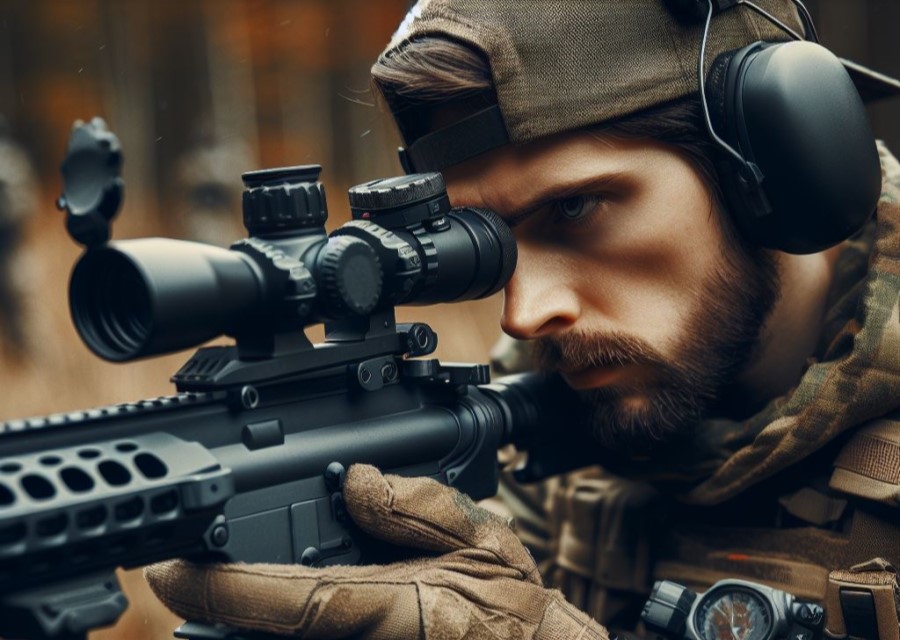
Photo Credits: Paintballbuzz.Com by Carl Jones
Fine-tuning your scope is key to achieving precision when aiming without the need to fire a shot. In this section, we’ll dive into the nitty-gritty of scope adjustments, exploring techniques for adjusting windage and elevation to optimize your aim.
Additionally, we’ll cover the importance of confirming accuracy at a shooting range, ensuring that your adjustments yield the desired results. Get ready to fine-tune your scope like a pro and enhance your shooting performance!
1. Adjusting Windage and Elevation
Adjusting windage and elevation are crucial steps in sighting in a scope without shooting. Here is a step-by-step guide to properly adjusting windage and elevation:
- Ensure stability: Before adjusting windage and elevation, make sure your scope is securely mounted on the firearm and stable.
- Identify the adjustment knobs: Locate the windage and elevation adjustment knobs on your scope. These knobs are usually labeled or marked with arrows indicating the direction of adjustment.
- Make incremental adjustments: Gradually make small adjustments to the windage and elevation knobs. Each click of the knob typically corresponds to a specific measurement, such as 1/4 MOA (minute of angle) or 1/2 MOA. Refer to your scope’s manual for specific details.
- Observe movement: After making an adjustment, observe the movement of the reticle through the scope. If the point of impact needs to move to the left, adjust the windage knob in that direction. Similarly, adjust the elevation knob to move the point of impact up or down.
- Recheck: After each adjustment, recheck the point of impact by aiming at the target. Continue making incremental adjustments until the reticle aligns with the desired point of impact.
- Keep track of adjustments: It is important to keep track of the adjustments made to windage and elevation. This will help you maintain consistency and make further adjustments if necessary.
By following these steps, you can effectively adjust windage and elevation on your scope without the need for shooting. This process allows you to zero in your scope and ensure accurate aiming during your shooting sessions.
2. Confirming Accuracy at a Shooting Range
To confirm accuracy at a shooting range without actually shooting, follow these steps:
- Set up your shooting range with appropriate targets and a safe backdrop.
- Adjust the scope’s windage and elevation settings based on the desired point of impact.
- Use a boresighter or other optical alignment method to align the scope with the target accurately.
- Visually verify the alignment by comparing the reticle to the target and make any necessary adjustments.
- If available, use laser devices to further ensure the accuracy of the scope.
- Make fine adjustments to the windage and elevation settings as needed to achieve the desired accuracy.
- Confirm the accuracy by visually inspecting the point of impact on the target.
By following these steps, you can confirm accuracy at a shooting range without actually shooting. This allows you to make any necessary adjustments before heading to the actual shooting range.
Final Thoughts on How to Sight in A Scope without Shooting
Additionally, when it comes to sight in your scope, it can be beneficial to incorporate a bore sighting tool into your process.
This handy tool helps align your scope with the barrel of your firearm, saving you both time and ammunition during the zeroing process. Of course, it is essential to always prioritize safety by following all necessary precautions and guidelines when handling firearms.
Furthermore, don’t underestimate the power of regular practice in improving your shooting skills. By dedicating time to become familiar with the capabilities of your scope, you can enhance your overall shooting proficiency. This practice will ensure better accuracy when you find yourself out in the field.
By incorporating these steps and considering these factors, you can efficiently and effectively sight in your scope without the need for shooting. Remember, safety should always be your top priority when handling firearms.
Frequently Asked Questions
How can I sight in a scope without shooting?
There are several methods to sight in a scope without shooting. One option is to use a boresighter tool, such as a laser boresighter, visual boresighting, or optical boresighter. These tools help align the scope with the barrel without the need for live ammunition. Another method is to remove the bolt of a bolt-action rifle and align the sight picture with the red dot scope. Additionally, you can use an etched grid on a lens attached to the gun barrel with an optical boresighter.
Can a red dot sight be sighted in without shooting?
Yes, it is possible to sight in a red dot sight without shooting. By using a boresighter tool like a laser boresighter or visual boresighting, you can align the red dot in the scope with the barrel. These methods allow you to make the necessary adjustments without the need for live rounds, saving time and ammunition.
How do I align a red dot sight with a bullet-shaped tool?
To align a red dot sight with a bullet-shaped tool, such as a laser boresighter, attach the tool to the rifle’s barrel. Then, simply align the laser dot emitted by the tool with the red dot in the scope. By adjusting the position of the dot, you can ensure that the red dot scope is properly sighted in and lined up with the barrel.
What is the purpose of boresighting a rifle scope?
The purpose of boresighting a rifle scope is to ensure that the scope is aligned with the barrel of the gun. This alignment is crucial for accuracy, as it ensures that the shots will hit the target. Boresighting is especially important when using a new rifle or when changing scopes, as it allows you to make the necessary adjustments before you start shooting.
Can I sight in a red dot scope for longer distances?
While red dot scopes are ideal for close-range targets, they may not be as effective for shooting at longer distances. However, some red dot scopes come with magnification capabilities, which allow them to be used for both close-range and long-range shooting. By adjusting the scope’s Minute of Angle (MOA) based on the distance to the target, you can compensate for the bullet’s trajectory and effectively shoot farther.
How should I mount a red dot scope on a rifle?
Properly mounting a red dot scope is crucial to ensure its alignment with the barrel. Before mounting the scope, it is recommended to unload the weapon and double-check that it is unloaded. Then, follow the manufacturer’s instructions for mounting the scope securely and aligning it with the barrel. This will help ensure that the red dot scope stays in place and consistently matches up with the point of impact on the target.

